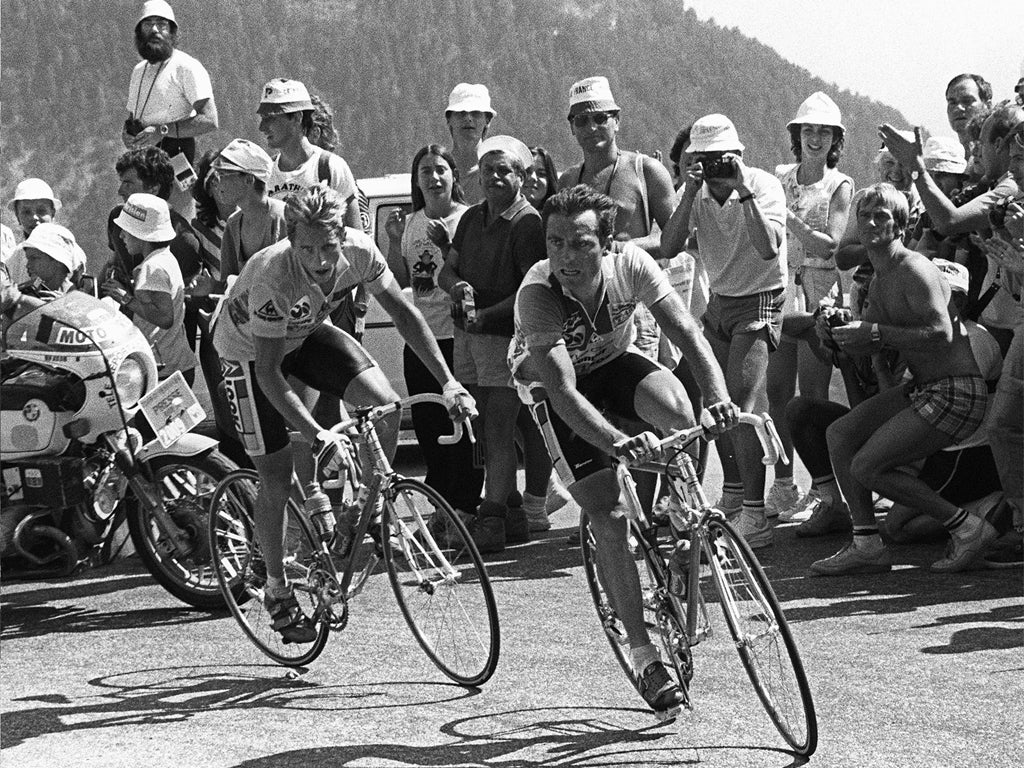Tour de France 2013: Alpe d’Huez – so good they’re climbing it twice
Tour breaks new ground today with double ascent of iconic mountain to mark 100th birthday

Your support helps us to tell the story
From reproductive rights to climate change to Big Tech, The Independent is on the ground when the story is developing. Whether it's investigating the financials of Elon Musk's pro-Trump PAC or producing our latest documentary, 'The A Word', which shines a light on the American women fighting for reproductive rights, we know how important it is to parse out the facts from the messaging.
At such a critical moment in US history, we need reporters on the ground. Your donation allows us to keep sending journalists to speak to both sides of the story.
The Independent is trusted by Americans across the entire political spectrum. And unlike many other quality news outlets, we choose not to lock Americans out of our reporting and analysis with paywalls. We believe quality journalism should be available to everyone, paid for by those who can afford it.
Your support makes all the difference.Some of the Tour de France’s best-known mountain climbs are more difficult than Alpe d’Huez, like the Mont Ventoux. Others, like the Galibier or Tourmalet are much longer and higher. But none are more emblematic than Alpe d’Huez – and as the centenary Tour’s way of underlining just how important it is, today, for the first time, the Alpe will be tackled twice on the same stage.
Already ridden 27 times in the Tour’s history since it first put in an appearance in 1952, Alpe d’Huez is significant not just because it has seen race-winning moves, most recently in 2008, when Spain’s Carlos Sastre broke away to claim the stage win and the lead. Nor is it because some of those who have raised their arms in triumph after passing through the short tunnel in a ski station at its summit include the greatest riders of the race, such as Italy’s Marco Pantani, winner there in 1995 and 1997. Nor is it important just because it is the one climb of every Tour guaranteed to be packed with fans along all of its 13.8 kilometres – more than a million, for example, were said to be there in 2004.
The reason for Alpe d’Huez’s pre- eminence in the Tour is very simple. It has become the ascent that every climber in the peloton dreams of winning. Victory there automatically puts you in the realms of greatness – although, as Lance Armstrong, who triumphed in 2001 and 2004, has discovered, it does not automatically keep you there.
For proof of how deeply engrained the Alpe d’Huez is in the Tour’s collective consciousness, on each of its 21 hairpins there is a plaque with a name of one of the riders previously to have won on the climb – something no other mountain ascent has in France. Alpe d’Huez also always marks a watershed in the Tour. In 2003, for example, it was where it became clear that Armstrong was in for the toughest Tour of his career.
“For me the toughest things about the Alpe d’Huez are the hairpin bends,” said Graham Jones, the former Peugeot pro and BBC cycling analyst who rode up the Alpe in the 1981 and 1983 Tours. “They flatten off and then kick up again and that breaks your rhythm. It’s not as hard, physically, as the Ventoux, but the crowds encroaching on you make it much more difficult to race.”
As for doing it twice, with a vertiginous descent off the short Col de Sarenne in between, Tour director, Christian Prudhomme, told The Independent: “We already wanted to do that in the 2011 race.”
Apart from the historical justification for doing the climb twice, another reason, added Prudhomme, is “that way TV viewers will see both the ‘crazy’ side of the Alpe, and the other side, where [on the descent] the race will be plunged into total silence and there will be no fans at all. No press cars, I imagine, and certainly no publicity or guest cars. It’ll be a real contrast.”
There is one drawback: both Chris Froome and world time-trial champion, Tony Martin, have said the descent of the Sarenne, prior to tackling the Alpe again, is dangerous. For Prudhomme it is “sinuous but not too complicated”.
As for going up the Tour’s most hallowed climb twice, for most of the riders, while special, it will not make more demands on them than any other ascent. “For riders climbing the Alpe twice is no more complicated or easy than doing any two other cols,” Jones said, “but what makes it stand out as a climb is the whole mystique and sense of theatre surrounding the Alpe d’Huez. And the atmosphere.
“Tour photographers are already tweeting that there aren’t many fans on [yesterday’s] time trial because they’re all on the Alpe. It’s going to be very special.”
Join our commenting forum
Join thought-provoking conversations, follow other Independent readers and see their replies
Comments